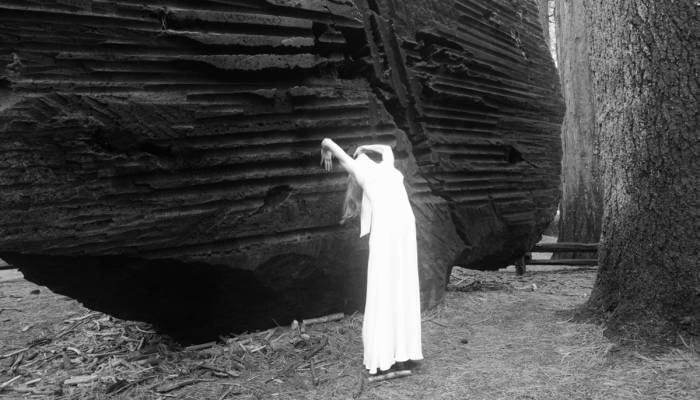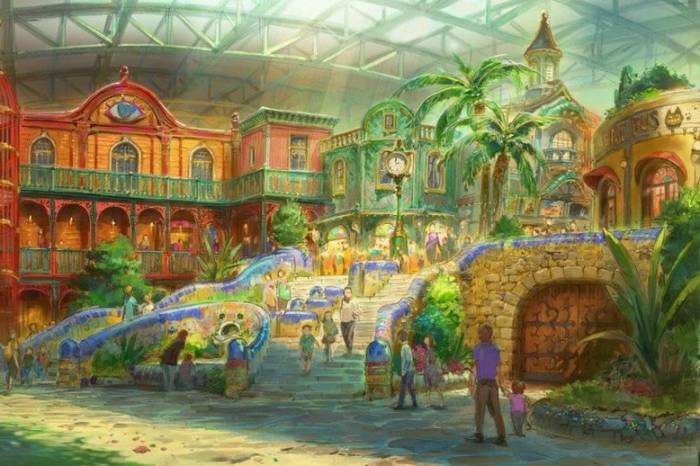The Paradox Of Wild English Gardens
The charming contraction in the creation of English cottage gardens.
Give me odorous at sunrise a garden of beautiful flowers where I can walk undisturbed.
-Walt Whitman
Since times remote humans have wanted – and to certain extent have achieved – the delimitation and transformation of the great garden of nature, to give form to its branches, cut its leaves and guide them in a specific direction. That desire to manipulate and “recreate” the natural world that surrounds us — the same principle behind the ancient art of bonsai – finds an obvious contradiction in the creation of wild English gardens, or cottage gardens.
Gardening in England is an ancient tradition that has gone through different stages and trends. In the 18th century, for example, what became known as “English gardens” replaced the geometric and structured French gardens of the 17th century that had attempted to imitate the spaces of the royal house of Versailles – perfectly clipped mazes and carpets of flowers, decorated with fountains and statues. The English garden was the reflection of the idealization of pastoral nature, subsequently influenced by the English Romantic movement; gardens with large grassy areas, clumps of trees isolated like colonies and imitations of caves, Greek temples, ponds and a spirit that could be considered wilder than what was common in continental Europe.
Toward the end of the 19th century a new English garden style emerged known as the English cottage garden. These beautiful spaces that normally surrounded a country house or cottage had existed for centuries but it was not until that time that they became a trend in garden design and their characteristics were defined and refined.
English cottage gardens imply a delicate contradiction of being a garden, a space delimitated and designed by humans that pretends to be a wild garden – with all the implicit contradictions of the concept. They normally include orchards, gardens of aromatic herbs, flowerbeds and, sometimes, beehives. The plants are dense but pruned and occupy small spaces, flooding the garden. Their inhabitants – a mixture of edible plants, herbs and ornamental shrubs – fill the spaces where there are no straight lines, where it appears that nature did all the work. Roses, daisies, violets, geraniums, Chinese hibiscus, marigolds and other herbs that invade this jumbled space that could appear wild but is perfectly designed.
Helen Leach, in her book Cultivating Myths, states that the cottage garden represents the image of an idealized and definitively fictitious world that is located somewhere in England’s past and is a fantastical land, like many other creations inspired in Romantic concepts of what nature is. Leach says the idea of the space does inspire a kind of gardening that, beyond the use of specific plants, is characterized by its way of combining and distributing the plants, a unique feature of these overcrowded gardens.
English cottage gardens portray what English poet Alexander Pope once called the “amiable simplicity of unadorned nature”; they represent an effort to sculpt the natural world, conserving what is assumed are characteristics of wild and pristine nature, a type of beautiful controlled chaos, a disorganized organization and a wild world completely controlled and discreetly ordered: a garden that appears to have been taken over by the plants that inhabit it.
Related Articles
When ancient rituals became religion
The emergence of religions irreversibly changed the history of humanity. It’s therefore essential to ask when and how did ancient peoples’ rituals become organized systems of thought, each with their
Larung Gar, the valley that is home to thousands of Buddhist monks
If we think about the monastic life it is very probable that we think about solitude, seclusion, silence and a few other qualities whose common denominator is the appropriate isolation for mediation
Dialogue with the Dalai Lama on science and spirituality
The Dalai Lama has been interested in science since he was a child. Over the years he’s visited many laboratories and has attended conferences that discuss consciousness from the scientific point of
A New Year's resolution for the earth
Worrisome quantities of waste are generated by human populations. Especially in cities, these have reached unprecedented and alarming levels. A largely uncontrolled practice, it affects everything on
The Dark Mountain Project: or how literature can confront ecocide
One impulse from a vernal wood May teach you more of man, Of moral evil and of good, Than all the sages can. Wordsworth, “The Tables Turned” (fragment) Words are elementary. The only reason we can
Are there no women in the history of philosophy?
Do only men philosophize? This could sound like a silly question, but if we quickly review the names of philosophers, from Aristotle to Slavoj Žižek, it would appear to be an exercise that is
Things that are about to disappear: photography as environmental conservation
Cristina Mittermeier is the founder of the International League of Conservationist Photography (iLCP), and is at the front of a modern movement to use photography with environmental purposes. Her work
Architecture And Music; An Affair That Acts On The Matter
A composition is like a house you can walk around in. — John Cage Perhaps music, more than the art of sound, is the art of time. That’s why its communion with space, and architecture, is so often so
Psycho-geography (On The Ritual Casting of a City)
Mrs. Dalloway walked down the streets of London guided by an “internal tide” that made her stop somewhere, enter a store, turn at the corner and continue her journey, as if she were adrift. La dérive
A Theme Park Inspired by Hayao Miyazaki is About to Open …
One of animation’s most spectacular exponents, Hayao Miyazaki, is the artist who transformed the direction of traditional animation forever.










